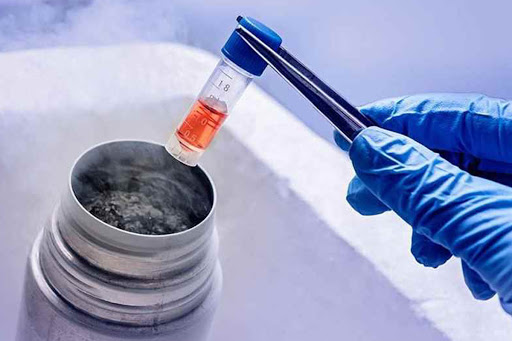Frozen embryo transfer, or FET, may be a procedure of aided replica technology during which an antecedently frozen embryo is thawed and transferred to a female internal reproductive organ properly ready to own a baby.
The frozen embryo may be a term for embryos that aren’t transferred throughout the IVF cycle and area unit thought-about appropriate for cryopreservation or phase transition. the simplest embryos area unit most ordinarily hand-picked for transfer in contemporary IVF cycles. If embryos of an adequate quality stay, they will be frozen for later use. Not all cycles have embryos that area unit appropriate for a phase transition. The survival rate when thawing frozen embryos is some seventieth, therefore solely sensible quality embryos ought to be frozen.
Occasionally a complete freeze cycle could also be suggested. rather than transferring AN embryo when IVF, all embryos area unit frozen for thawing later, in order that the simplest extant embryo is often transferred later. Total phase transition cycles could also be instructed for a range of reasons, like if the girl is sick or has female internal reproductive organ trauma, that may cause the transfer to be less probably to realize a booming physiological condition. different reasons to freeze everything area unit the cases during which a female internal reproductive organ polyp will endanger implantation because of its size and site, or in cases wherever intrauterine fluid has accumulated, that reduces the probability that the embryo will adhere to The female internal reproductive organ in close cases of female internal reproductive organ hyperstimulation syndrome (OHS), it’s usually suggested to freeze everything, since the chance of OHS severity is considerably reduced if physiological condition doesn’t occur. Another indication for a total phase transition is in cases wherever physiological condition has not been the result of multiple transfers of previous contemporary embryos because of potentially harmful effects ensuing from secretion fluctuations or imbalances.

How is an FET cycle done?
Before beginning a junction transistor cycle, the doctor ought to value the cavity by one in every of 3 tests:
Hysterosalpingography (HSG): during which AN x-ray dye is injected into the female internal reproductive organ and also the cavity is seen with x-rays;
Sonohysterogram (SonoHSG): during which saline is injected into the female internal reproductive organ and also the cavity is seen with ultrasound;
Hysteroscopy: during which a fiber optic medical instrument is inserted into the female internal reproductive organ and also the cavity is directly discovered.
If abnormalities area unit detected, they need to be surgically corrected before continuing with a frozen embryo transfer.
There area unit 2 protocols used for junction transistor cycles. each protocol use hormones to organize the female internal reproductive organ for embryo implantation.
The first junction transistor protocol involves the suppression of the pituitary body exploitation body covering injections of Lupron for roughly a period of time to decrease the possibility of the organic process occurring unexpectedly. steroid medications also are given to extend the thickness of the female internal reproductive organ lining, making ready it for implantation. once the female internal reproductive organ lining has reached the desired thickness, Lupron is suspended and progestin is run. Embryo transfer is typically done on the fourth or sixth day of progestin, looking on the day when fertilization, the embryo had frozen.
The second junction transistor protocol doesn’t embody Lupron, however, it merely involves the utilization of estrogens for up to three weeks. once the mucous membrane reaches the desired thickness and the organic process doesn’t occur, progestin is started, followed by embryo transfer on the fourth or sixth day of a progestin as within the initial protocol.
Follow Us

Add Your Comment